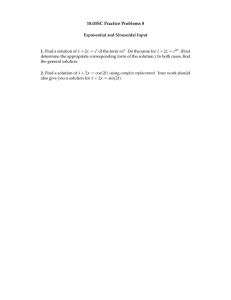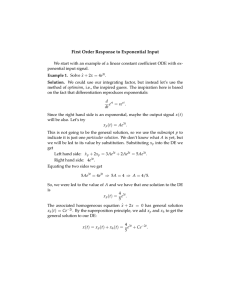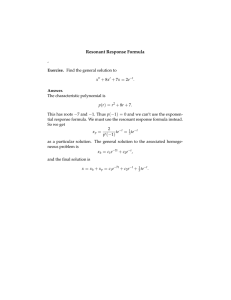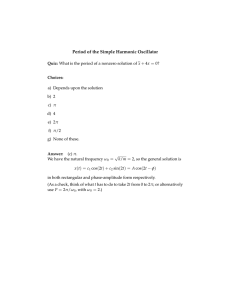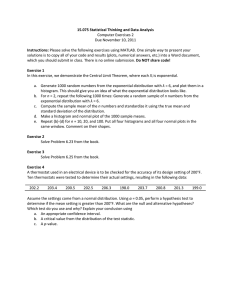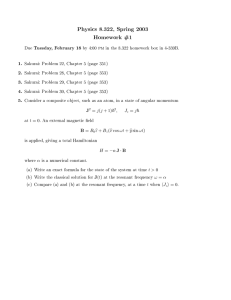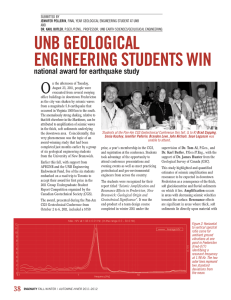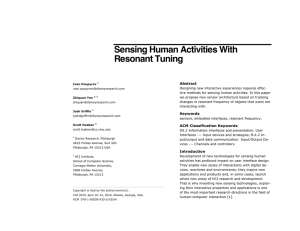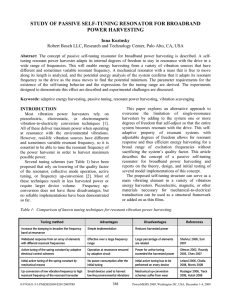The
advertisement
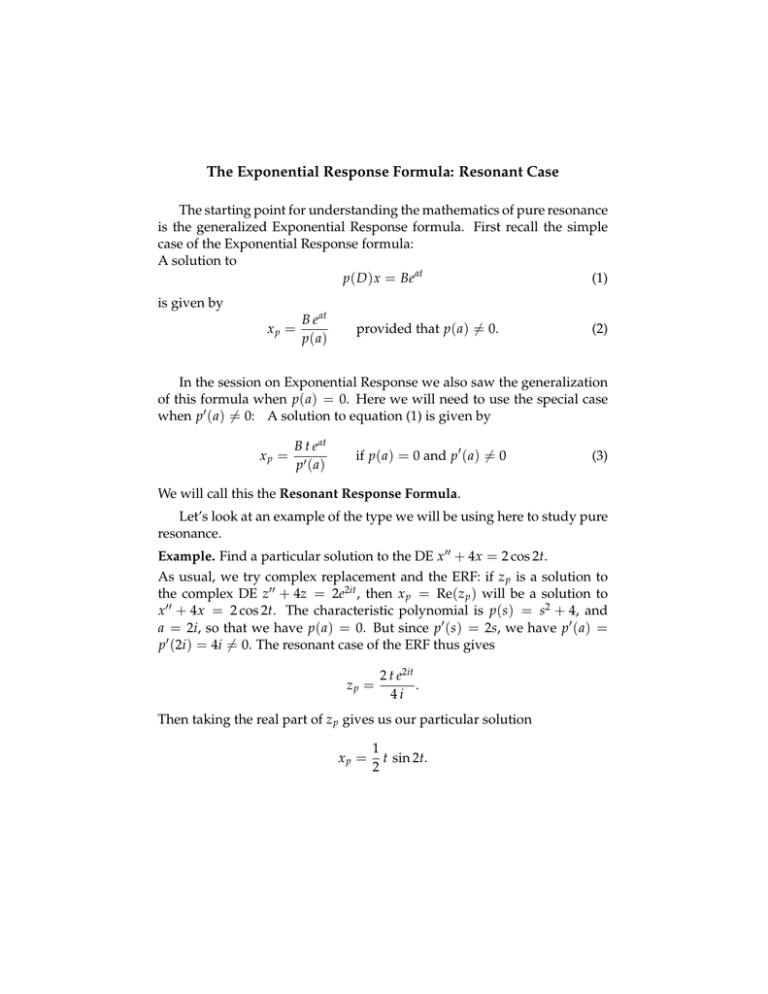
The Exponential Response Formula: Resonant Case The starting point for understanding the mathematics of pure resonance is the generalized Exponential Response formula. First recall the simple case of the Exponential Response formula: A solution to p( D ) x = Be at (1) is given by xp = B e at p( a) provided that p( a) �= 0. (2) In the session on Exponential Response we also saw the generalization of this formula when p( a) = 0. Here we will need to use the special case when p� ( a) �= 0: A solution to equation (1) is given by xp = B t e at p� ( a) if p( a) = 0 and p� ( a) �= 0 (3) We will call this the Resonant Response Formula. Let’s look at an example of the type we will be using here to study pure resonance. Example. Find a particular solution to the DE x �� + 4x = 2 cos 2t. As usual, we try complex replacement and the ERF: if z p is a solution to the complex DE z�� + 4z = 2e2it , then x p = Re(z p ) will be a solution to x �� + 4x = 2 cos 2t. The characteristic polynomial is p(s) = s2 + 4, and a = 2i, so that we have p( a) = 0. But since p� (s) = 2s, we have p� ( a) = p� (2i ) = 4i �= 0. The resonant case of the ERF thus gives zp = 2 t e2it . 4i Then taking the real part of z p gives us our particular solution xp = 1 t sin 2t. 2 MIT OpenCourseWare http://ocw.mit.edu 18.03SC Differential Equations�� Fall 2011 �� For information about citing these materials or our Terms of Use, visit: http://ocw.mit.edu/terms.
